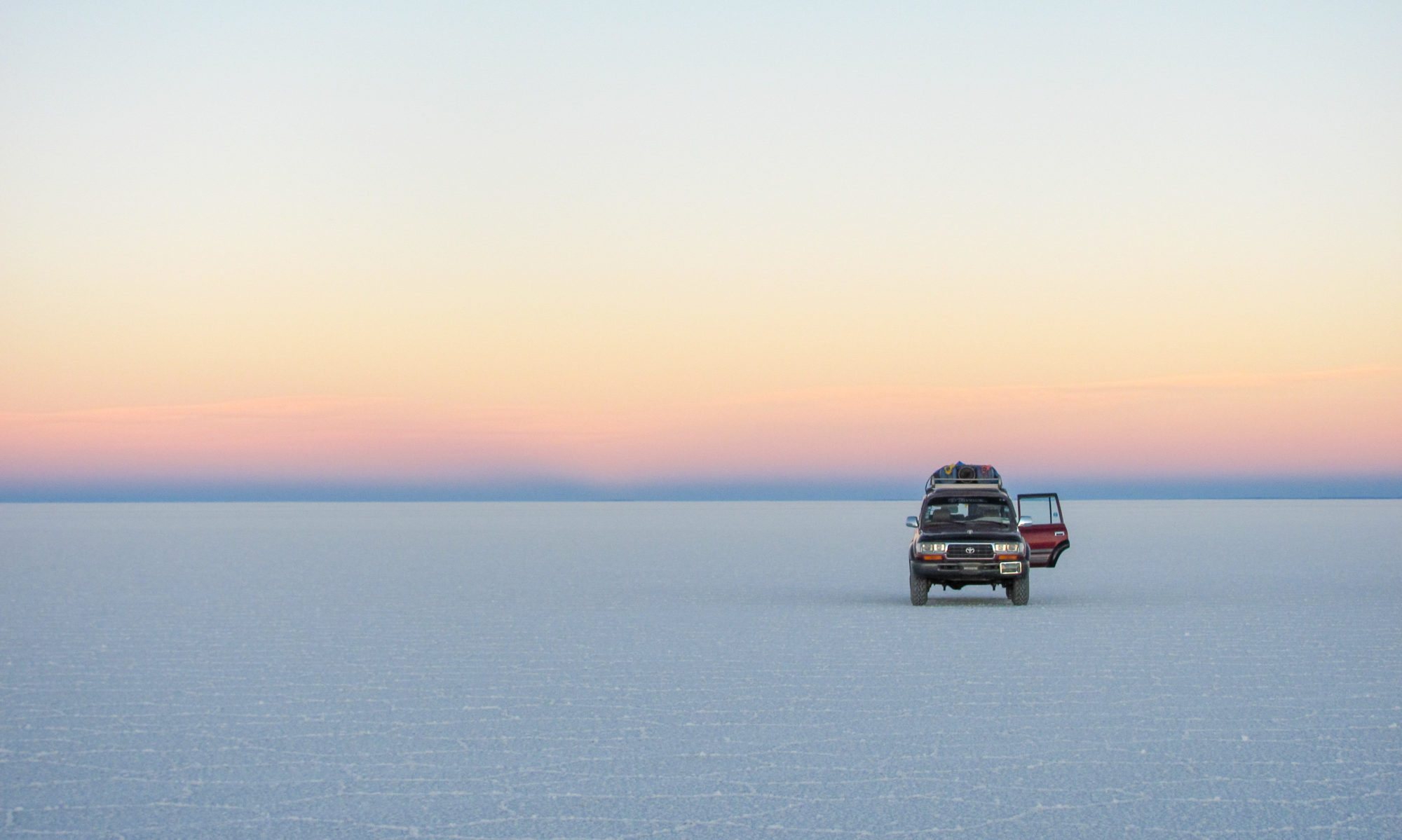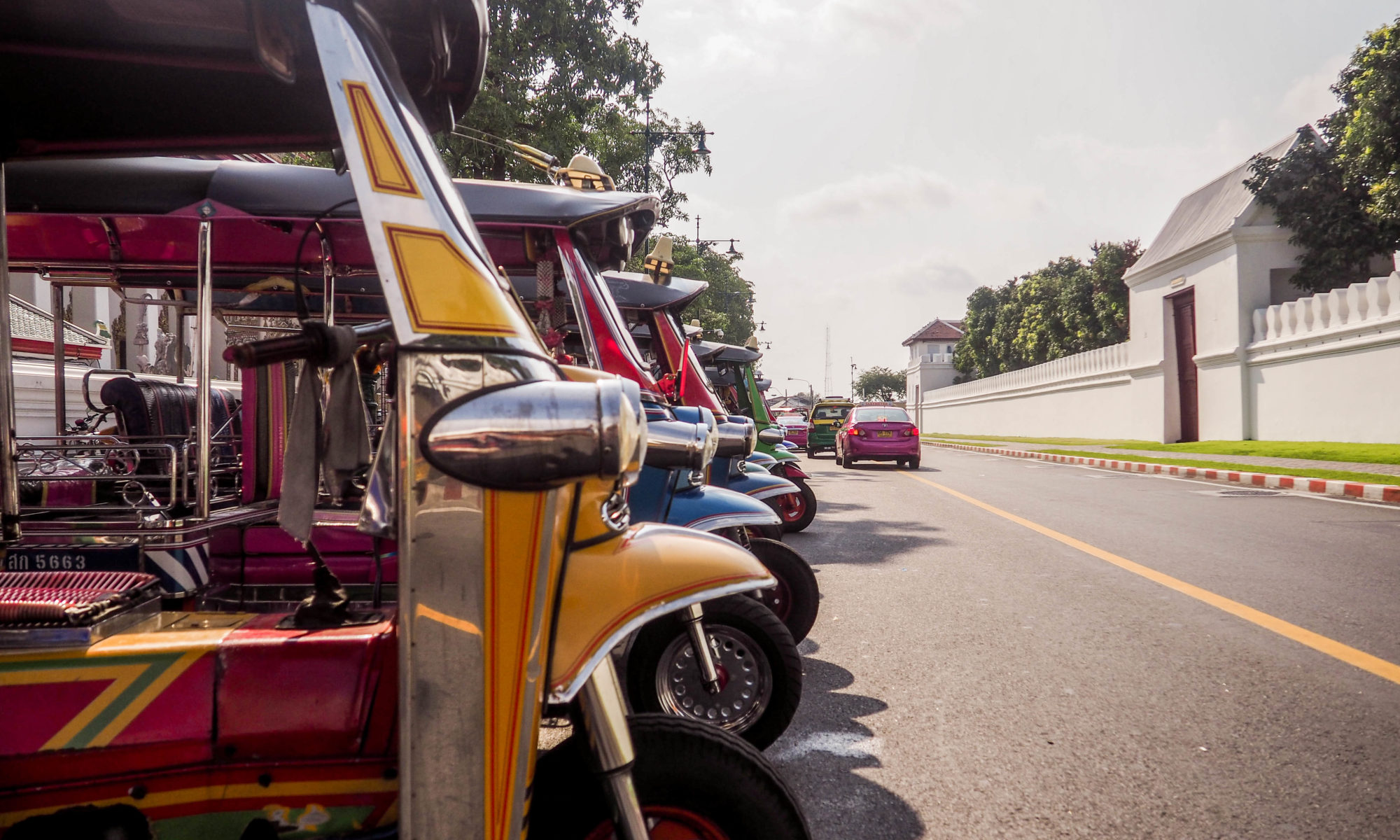Bangkok, the bustling capital of Thailand is not only the prime entry-point for people visiting the country but doubles as a travel hub from which to travel to its neighbouring countries Laos, Myanmar and Cambodia. If you like to explore South East Asia, it’s almost impossible to not go there, at least once. But what should you visit on your second trip when you have already seen its most famous highlights? Fear not, we’ve got you covered.
– Practical information –
So in any other travel guide, I would delve into detail on when you should travel to Bangkok, what your estimated budget should be and how you get there (and out again). In this read, I will not. The reason is simple: I’ve already covered those details in an extensive ‘first-time to Bangkok’ guide I’ve written last week. It’s quite elaborate and includes all sights in Bangkok I would recommend visiting on your first time there. If you are looking for general information on the capital of old Siam than that read (link below) is probably a better starting point. Use this article for more info on any extended stay or second visit.
– what to do –
Grand Palace
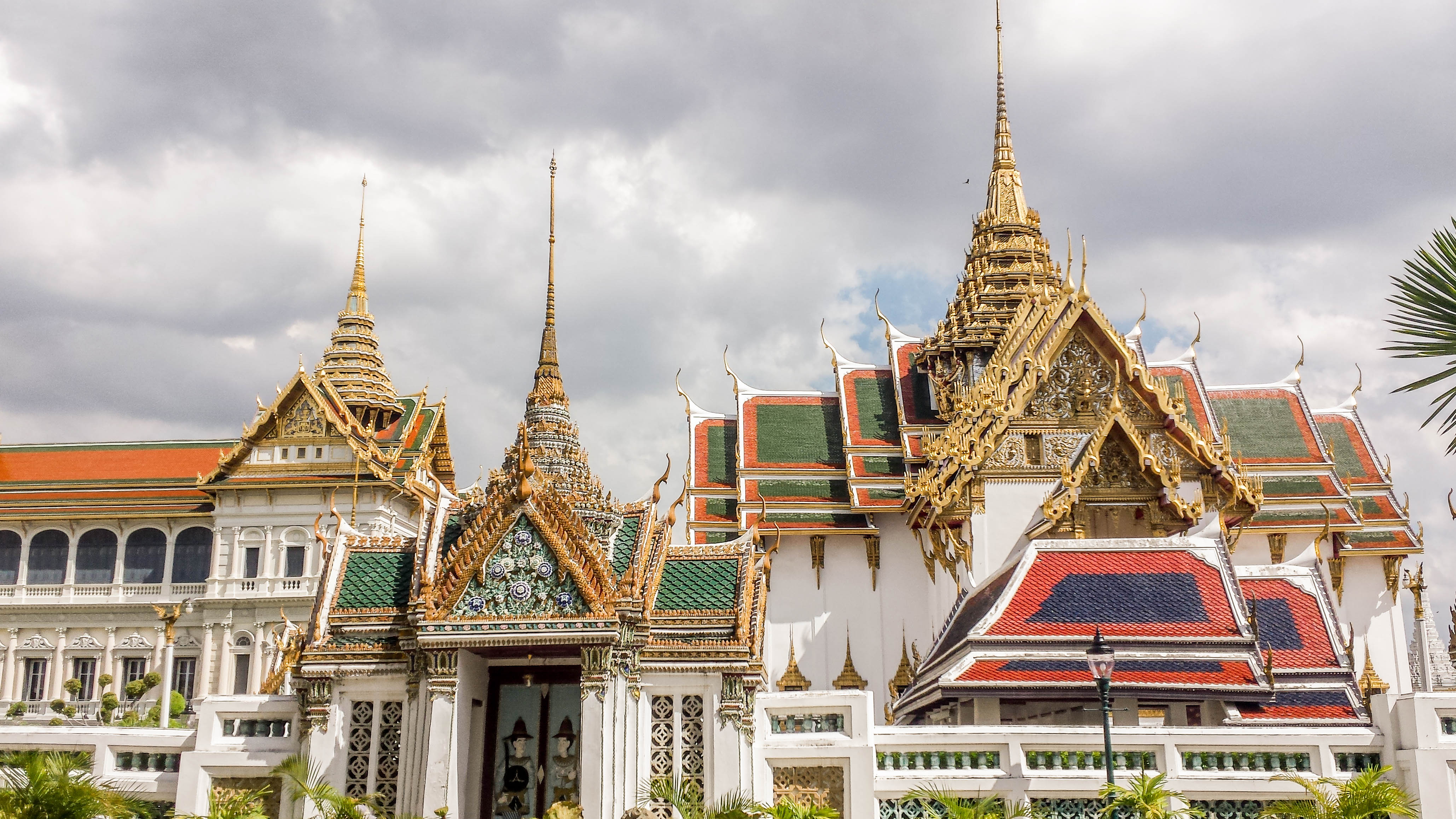
Entrance: 500 baht. What? The Grand Palace not on the first visit? That’s right. Why? Because even though Bangkok’s Grand Palace is undoubtedly beautiful and hosts a few of the most decorated temples, shrines and rooms in the country, it is also rather expensive. And a visit is an effort: it takes at least half a day and you will be boiling for the most part of it.
On my visit, after having queued up for at least half an hour I finally made it to the entrance gate. When I got eye-to-eye with a short, middle-aged, security guard with his belly proudly bulging over his belt I knew it was going to be trouble. Even though I was dressed properly I was forced to put old khaki pants and ditto long-sleeve shirt over my normal attire which, in 40 degrees Celcius with a scorching sun reflecting off all the buildings’ mosaics, is not pleasant, to say the least. The rest of the afternoon I found myself trying to squeeze through countless of tourists all at least as sweaty as I was, growing increasingly annoyed by the minute. I imagine this is just fantastic when travelling with kids.
So learn from my mistakes and get there early in the morning to see this 16th-century palace, built for King Rama the first, before the crowds rush in. The Grand Palace oozes grandeur, is known for its beautiful architecture and also hosts the world-famous emerald buddha.
Lumpini Park
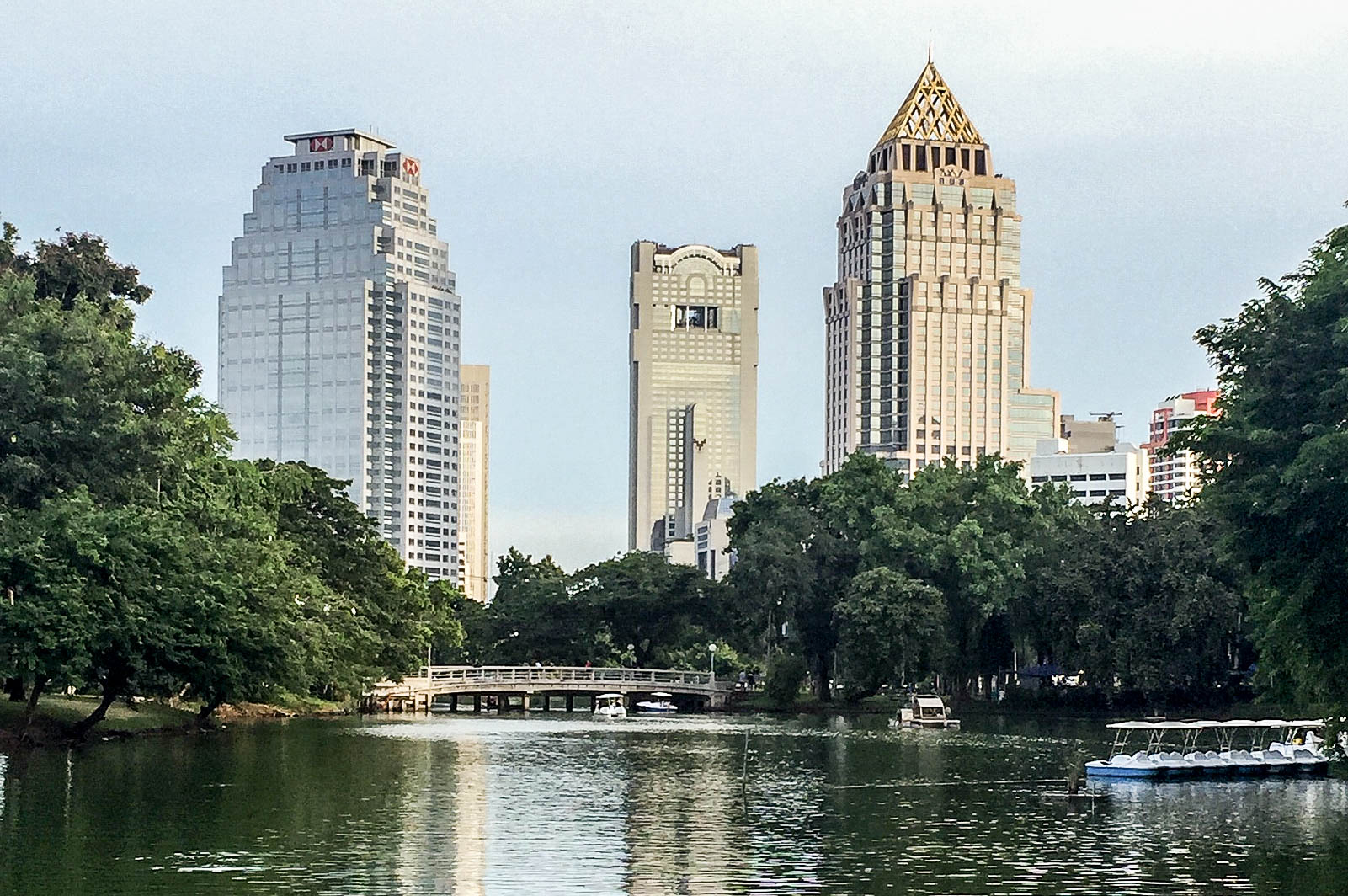
Entrance: free.This lush green park offers a great green escape from the urban jungle that characterises Bangkok. Lumpini Park is dubbed the ‘lizard-park’ because of its large population of monitoring lizards. Locals use it to go jogging, do yoga or to utilise one of its many free outdoor gyms. It also sports a big lake on which Chinese tourists peddle around in swan boats. To get there, take the MRT and get off at Silom, from where it is only a few minutes walk to the park.
PatPong
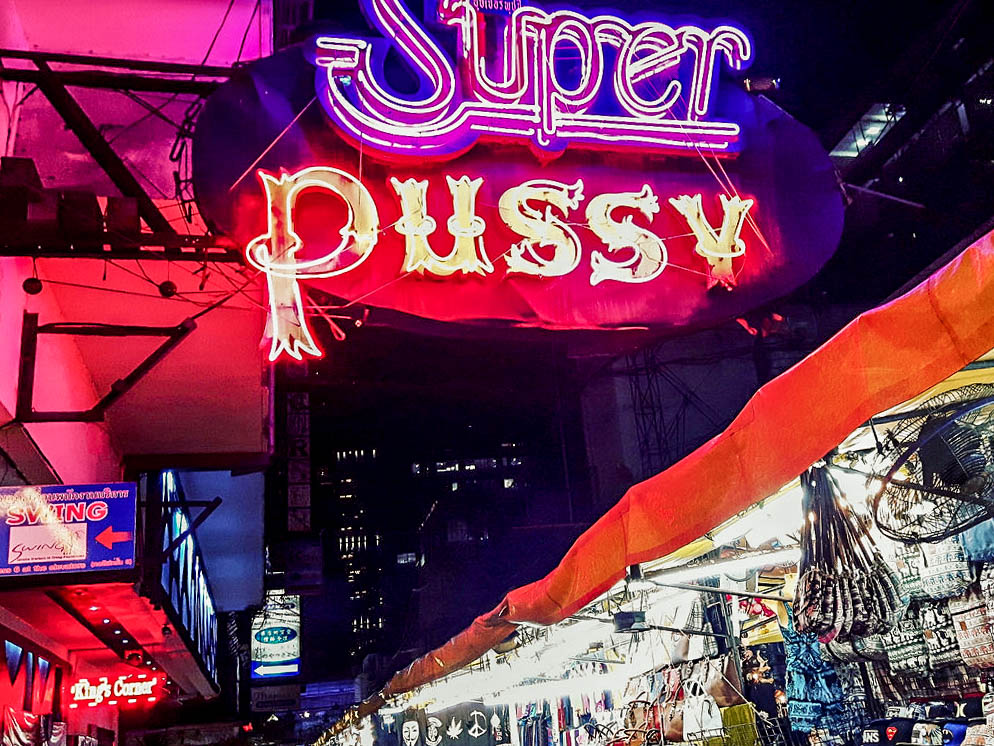
Not for the faint-hearted, PatPong is at the core of Bangkok’s Red Light District. Dozens and dozens of neon-lit GoGoBars paints the scene of the raunchiest area in Sukhumvit. Don’t pretend you are interested in the sub-par PatPong Nightmarket, you came here for the ping-pong-shows. But don’t think for a second this area is only visited by dirty old men searching for a ‘friend-for-the-night’, as a large part of the visitors are actually tourists lured by the mystery and the stories surrounding the infamous PatPong ping-pong-shows.
When visiting, beware! PatPong is also famous for its scams. Never enter a GoGo Bar alone, and always make sure beforehand that the show is free and you only pay for the drinks. A common scam is entering a place with ‘free entrance’ only to find out when leaving the place that you are charged for every 2-minute dance you’ve watched while being in the bar. ‘Yes free entrance, but you pay for show, you watch five show, you pay 500 baht’. Not the nicest farewell present you can get. Get there by taking the Skytrain to Sala Daeng or the MRT to Silom. PatPong is a couple of minutes by foot from both stations.
Jim Thompson House
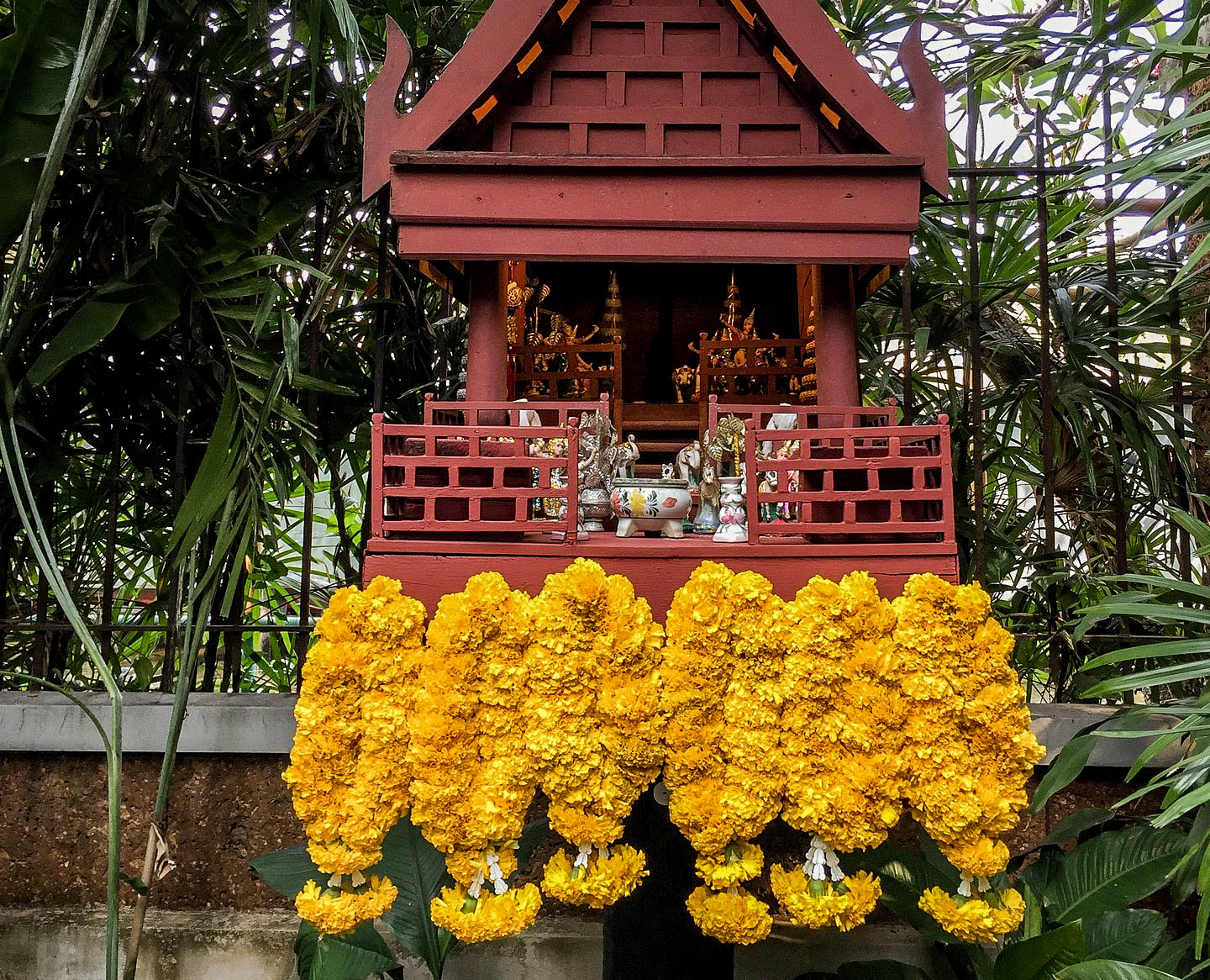
Entrance: 150 baht. Jim Thompson House is the former residence of James (Jim) H.W. Thompson, a U.S. citizen who permanently settled in Thailand when the second world war came to an end. He is the founder of the world-famous Thompson Thai Silk Company and his house, finished in 1959, is both build and decorated in the old Thai style but beautifully preserved. Jim went on a hike in the Malaysian Cameron Highlands in 1967 and was never seen again. His house, however, is still in pristine condition.
A visit to the house will probably not take more than an hour. Great about Jim Thomson House is that its location is perfect to combine with visiting other sights. Its located a few minutes walk from the BTS Skytrain stop National Stadium or Ratchathewi and only a 100 meters from the canal-taxi stop Ban Krua Nua, from where you can take a boat on the klongs (Bangkok’s canals) to the old historic heart of Bangkok (to visit all the famous temples).
Chatuchak Market
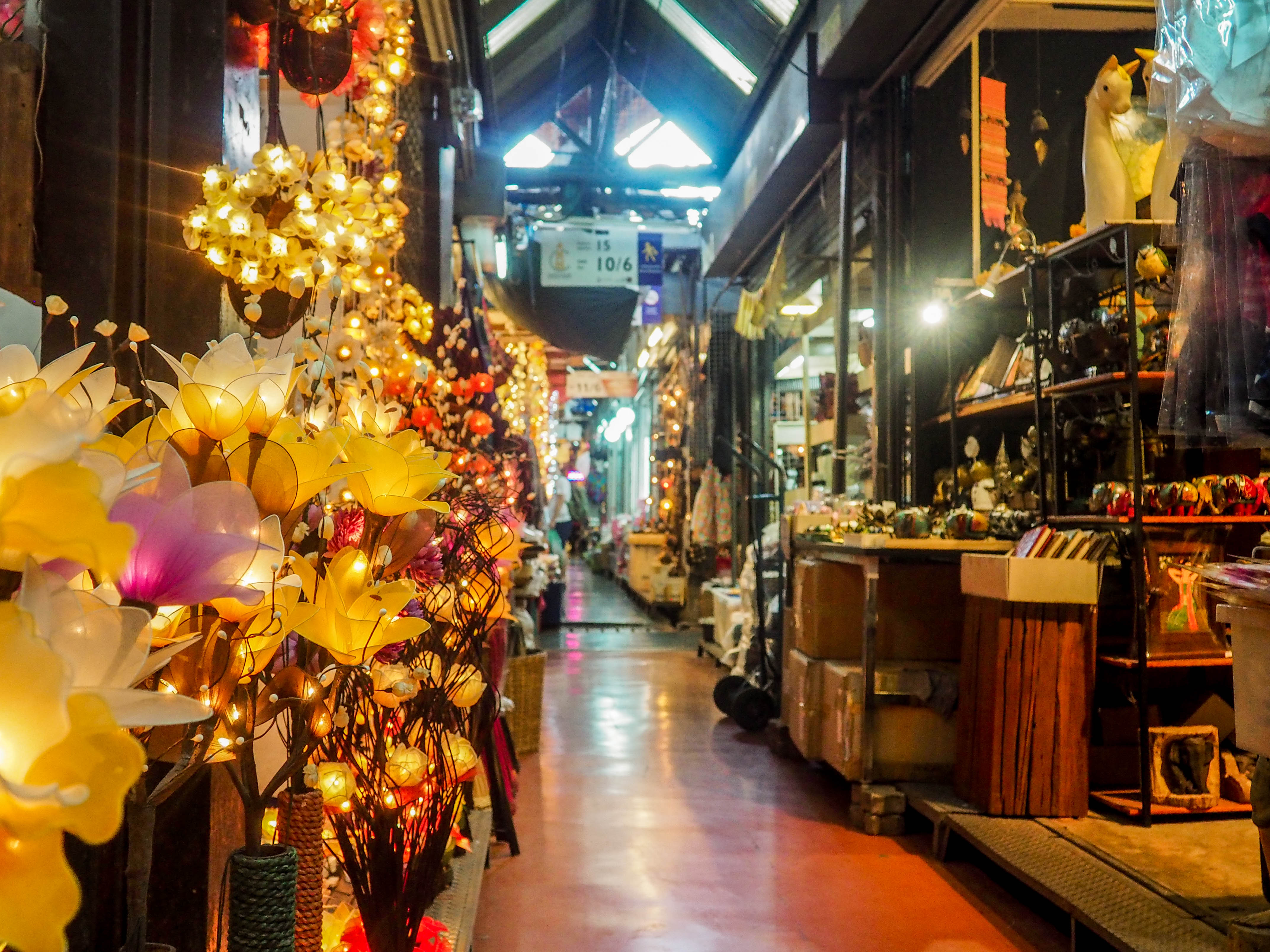
Chatuchak Market is a huge weekend-market that boasts over 8000 stalls and is a heaven for both art-lovers as well as trinket-shoppers. No matter what kind of souvenir you are looking for, you will find it here, but Chatuchak in all its abundance is not the cheapest market out there. The shops are all grouped into different categories both number and colour-coded, but on both my visits I gave up on walking a sensible route after about twenty minutes and happily got lost in the chaos of colours, smells and sounds. Take the BTS Skytrain to Mo Chit station, from there just let yourself be carried along with the masses of people that are all heading for the market.
– Eating & Sleeping recommendations –
Coco Walk & Caturday Café
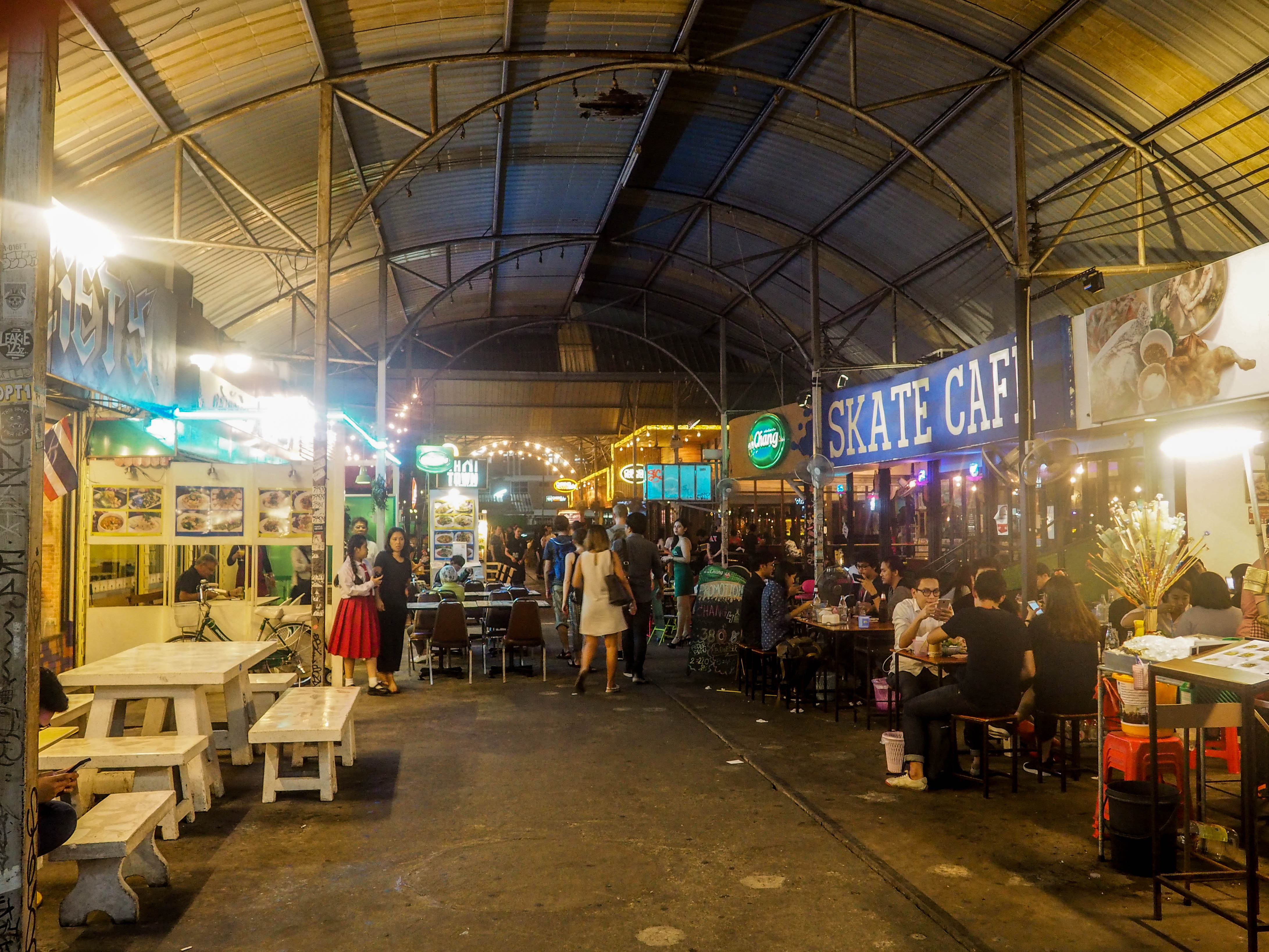
All major cities around the world have one nowadays so Bangkok could not be left out: a cat-cafe. The one in Bangkok is conveniently located next to the BTS Skytrain station Ratchathewi in the little bar-area called ‘CoCo Walk’ and opens its doors to cat-lovers every day between 12:00 and 21:00 o clock. But when Caturday closes the fun in CoCo Walk is not nearly over.
The CoCo Walk boasts a dozen drinking holes that cater the local middle-class youth. If you want to meet locals on their own turf, or are just looking for a nice place to have a couple of beers or do a little dancing Coco Walk is a good spot to go to. Tip: find a free table at the outdoor terrace of the Coco Walk Pub that overlooks the little ramp of Skate Cafe to see local boys, as young as 8, perfect their skills on the ramp.
Sleeping
Bangkok has so many excellent hotels, hostels and guesthouses that it is impossible to not find something you like. There are three places that I especially recommend because they top most competitors in their respective price range.
The Yard Hostel
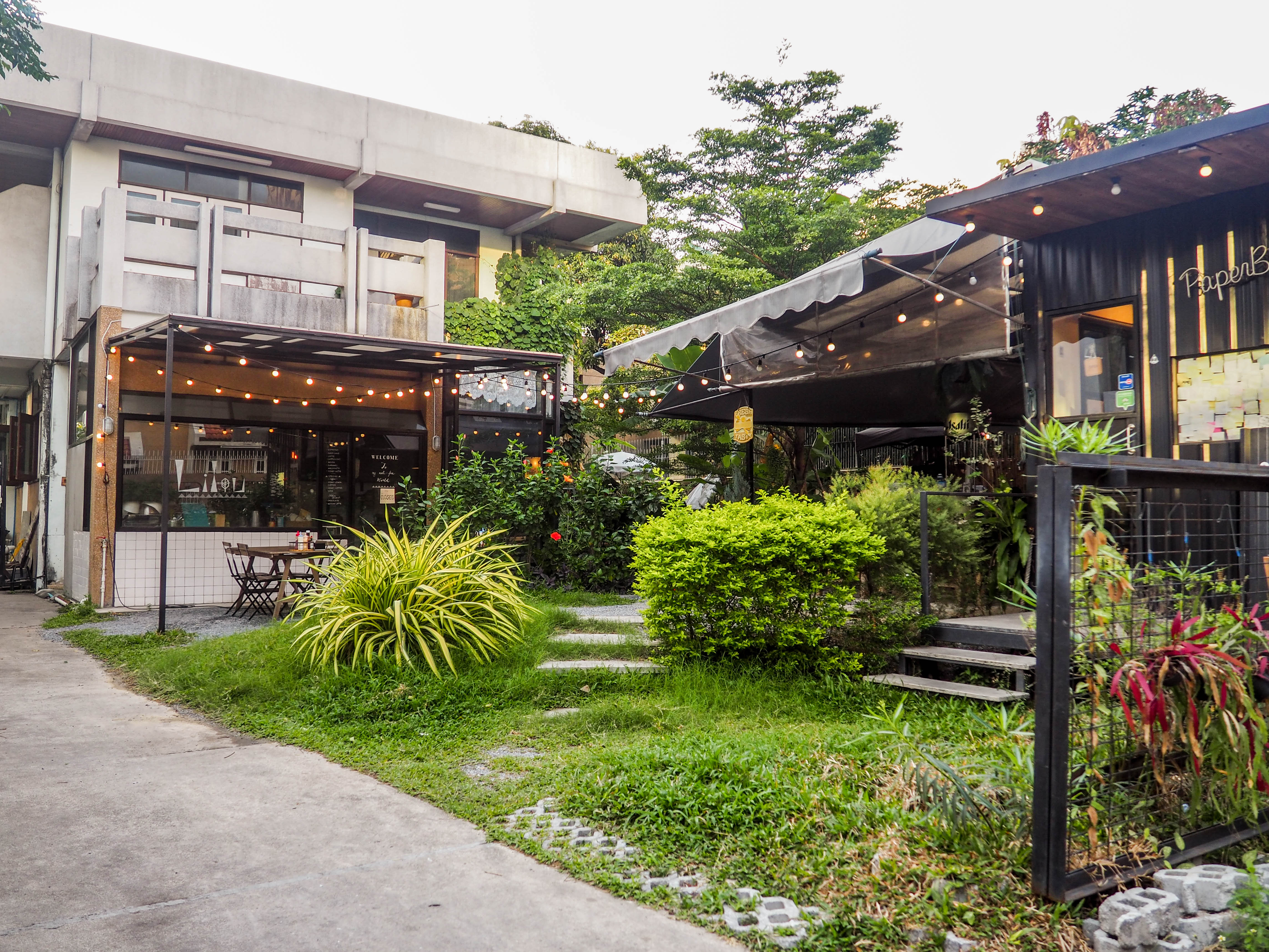
Located in Ari (the trendiest neighbourhood in Bangkok), and perfectly located en route of the BTS Skytrain, this social hostel is my top-pick for backpackers or young couples travelling together. The vibes are great, the yard (obviously, considering the name) is big and relaxing and the dorms are comfortable with great mattresses and good working air conditioning. They also do doubles if you need a little extra privacy;).
Old Capital Bike Inn
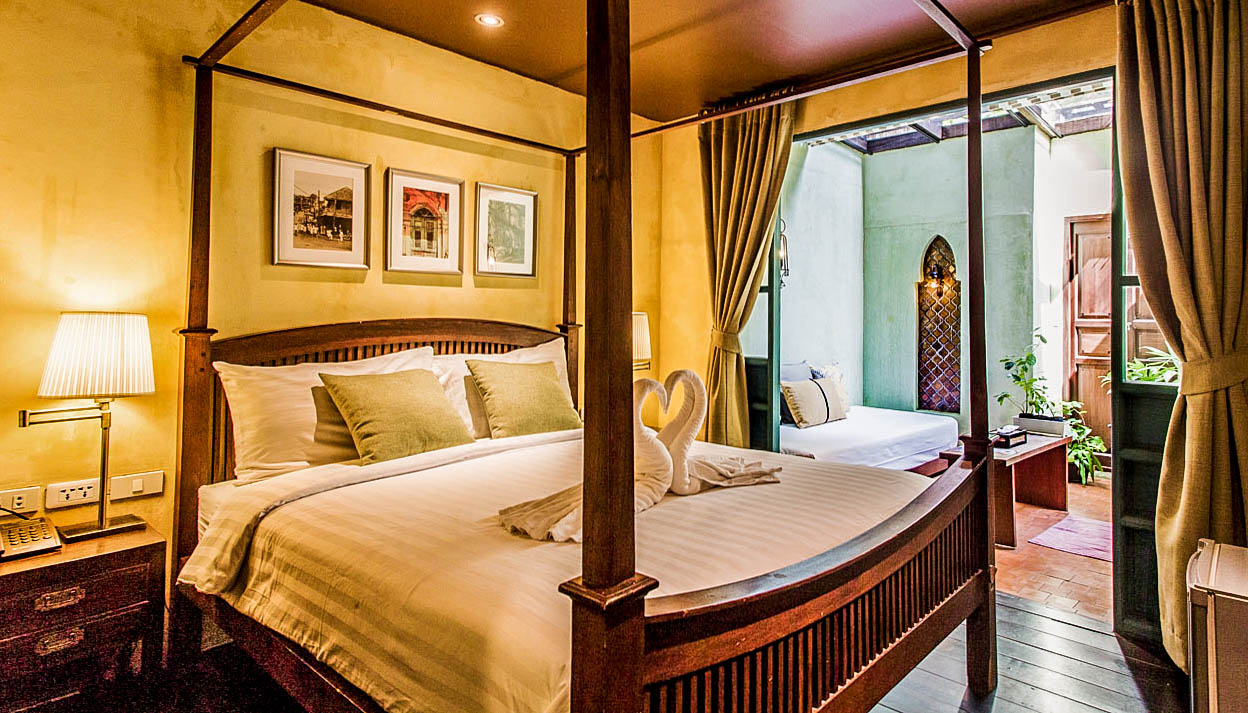
This small boutique hotel is perfectly located in the middle of the historic old centre (close to Khao San Road and all the temples), and sleeping here is like sleeping in Bangkok from the 18th-century. Both the rooms and the hotel itself is decorated in detail in an old-colonial style with a bicycle theme. Book for a few days, stay a week.
Bangkok Tree House
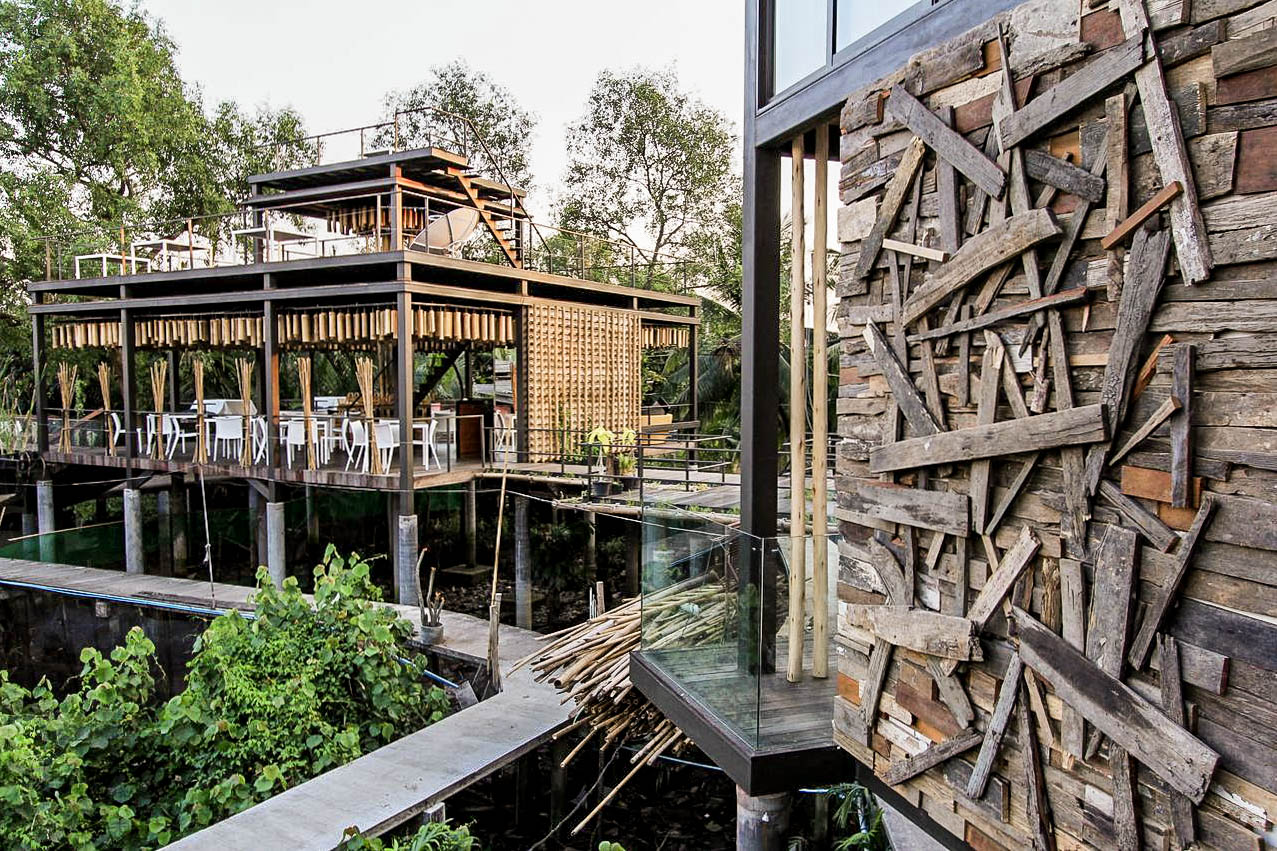
The place is very hip and the rooms are stunning. Location-wise this is not the most convenient place but the accommodation makes more than up for it. Breakfast at the leafy rooftop-terrace overlooking the river is probably the best way you can start your day in Bangkok. It is not the cheapest place in Bangkok (about EUR 100/ USD 110 a night), but you won’t find a hotel like this in every country in the world.
– Haven’t found everything you need? –
If you feel you are still missing out, check out the other articles I wrote on visiting Bangkok, including a first timer-guide and an in-depth article on staying in Bangkok’s trendiest neighbourhood: Ari (follow the links below).
